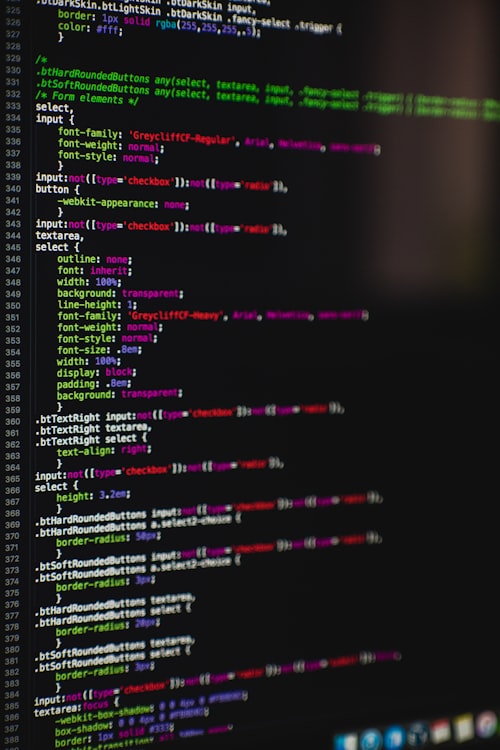Are you looking to implement email validation in your JavaScript project? Email validation is a crucial aspect of form validation, ensuring that users enter correctly formatted email addresses. By utilizing regular expressions in JavaScript, you can perform efficient and accurate email validation.
The Importance of Email Validation
Email validation plays a vital role in web development, particularly when it comes to handling user input. Validating email addresses before submitting data to a server offers several benefits:
Data Integrity: Email validation helps maintain the integrity of your data by ensuring that only properly formatted email addresses are accepted. This prevents invalid or malformed email addresses from entering your system.
User Experience: By implementing email validation, you can provide immediate feedback to users if they enter an incorrect email address. This enhances the user experience and reduces frustration by prompting users to correct their mistakes.
Prevention of Spam and Abuse: Validating email addresses helps prevent spam and abuse on your platform. By verifying the authenticity of email addresses, you can reduce the risk of receiving fake or malicious submissions.
Efficient Communication: Accurate email addresses are essential for effective communication with users. Validating email addresses ensures that your messages reach the intended recipients, reducing the likelihood of bounced emails or failed delivery.
Now that we understand the importance of email validation, let's explore how to implement it using regular expressions in JavaScript.
Regular Expressions for Email Validation in JavaScript
Regular expressions provide a powerful and flexible way to match patterns in strings. In JavaScript, you can use regular expressions to validate email addresses based on specific patterns and rules. Here's an example of a regular expression commonly used for email validation:
<pre><code>const emailRegex = /^([a-zA-Z0-9_\-\.]+)@([a-zA-Z0-9_\-\.]+)\.([a-zA-Z]{2,5})$/;</code></pre>Let's break down this regular expression to understand how it works:
<code>^</code> - The caret symbol indicates the start of the string.
<code>[a-zA-Z0-9_\-\.]+</code> - Matches one or more alphanumeric characters, underscores, hyphens, or dots.
This represents the username part of the email address. <code>@</code> - Matches the at symbol, which separates the username and domain parts of the email address.
<code>[a-zA-Z0-9_\-\.]+</code> - Matches one or more alphanumeric characters, underscores, hyphens, or dots.
This represents the domain name part of the email address. <code>\.</code> - Matches a dot character.
<code>[a-zA-Z]{2,5}</code> - Matches two to five alphabetical characters.
This represents the top-level domain (TLD) part of the email address. <code>$</code> - The dollar sign indicates the end of the string.
By using this regular expression, you can test whether a given string matches the pattern of a valid email address. Here's an example of how to validate an email address using this regular expression in JavaScript:
<pre><code>function validateEmail(email) { return emailRegex.test(email);}const email = '[email protected]';const isValid = validateEmail(email);console.log(isValid); // Output: true</code></pre>Feel free to customize the regular expression to suit your specific requirements. For instance, you can modify it to accept additional characters or enforce stricter rules for the username, domain, or TLD.
Commonly Asked Questions about Email Validation in JavaScript
Q1: Is email validation using regular expressions foolproof?
Email validation using regular expressions provides a reliable way to ensure basic email format compliance. However, it's important to note that it cannot guarantee the existence or deliverability of an email address. Users may still enter a valid format but non-existent or inactive email addresses. To address this, you can consider implementing additional checks, such as sending a verification email or using an email verification service.
Q2: Are there built-in email validation functions in JavaScript?
No, JavaScript doesn't have built-in email validation functions. However, you can use regular expressions or rely on third-party libraries that provide email validation functionality. Regular expressions offer flexibility and control over the validation process, allowing you to customize the validation rules to meet your specific needs.
Q3: Can I rely solely on client-side email validation?
Client-side email validation is convenient and offers immediate feedback to users. It helps catch basic errors before submitting data to the server. However, it's crucial to perform server-side validation as well to ensure data integrity and security. Server-side validation acts as a second line of defense, validating the email address on the server before processing it further.
Conclusion
Validating email addresses is a critical aspect of web development, and JavaScript provides the tools to accomplish this efficiently. By utilizing regular expressions, you can validate email addresses based on specific patterns and rules. Remember to consider the limitations of email validation using regular expressions and supplement it with additional checks when necessary. Implementing effective email validation not only enhances data integrity but also improves the user experience and reduces the risk of spam and abuse. Now, you can confidently implement email validation in your JavaScript projects and ensure the accuracy of user-provided email addresses.



